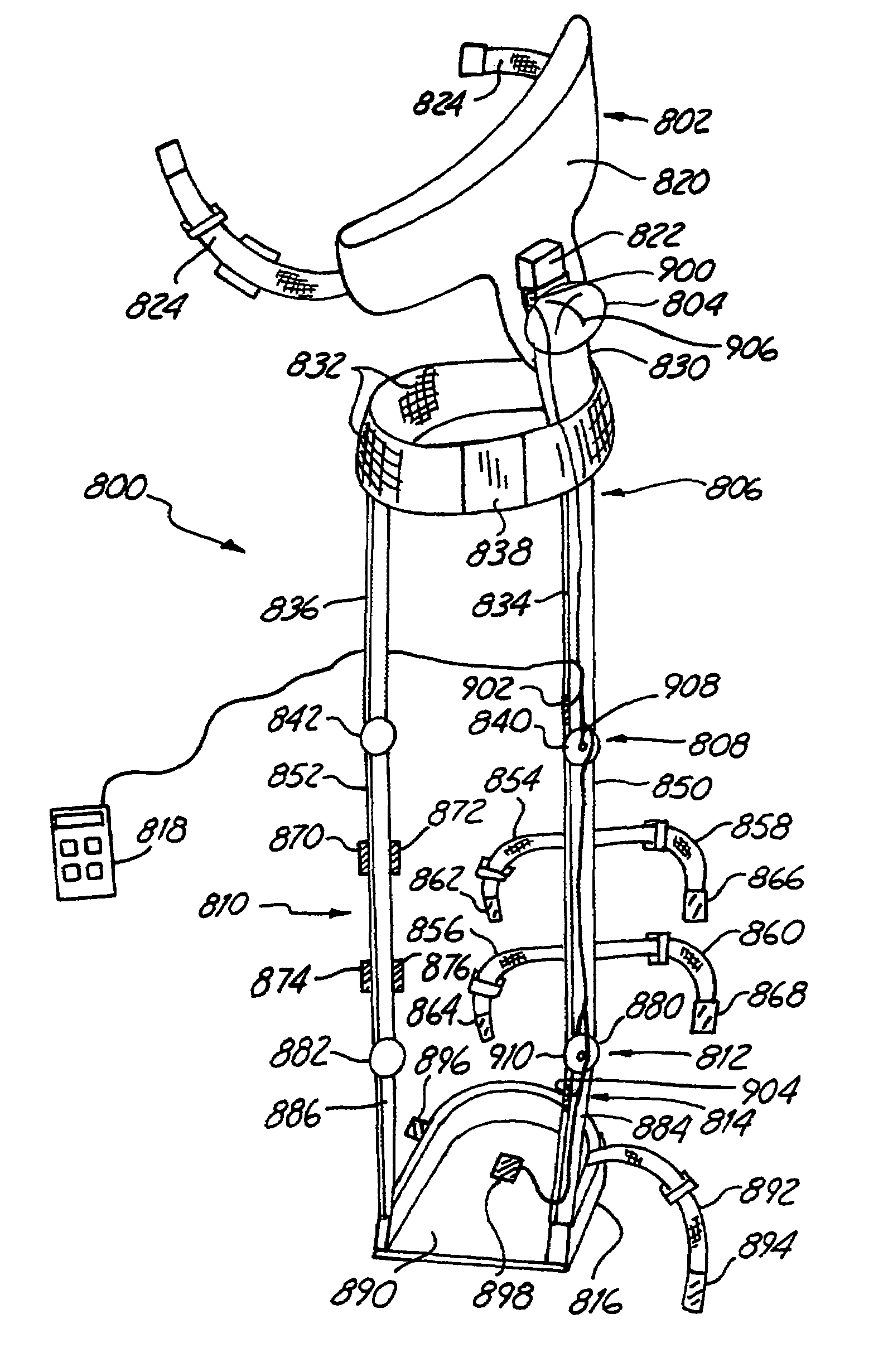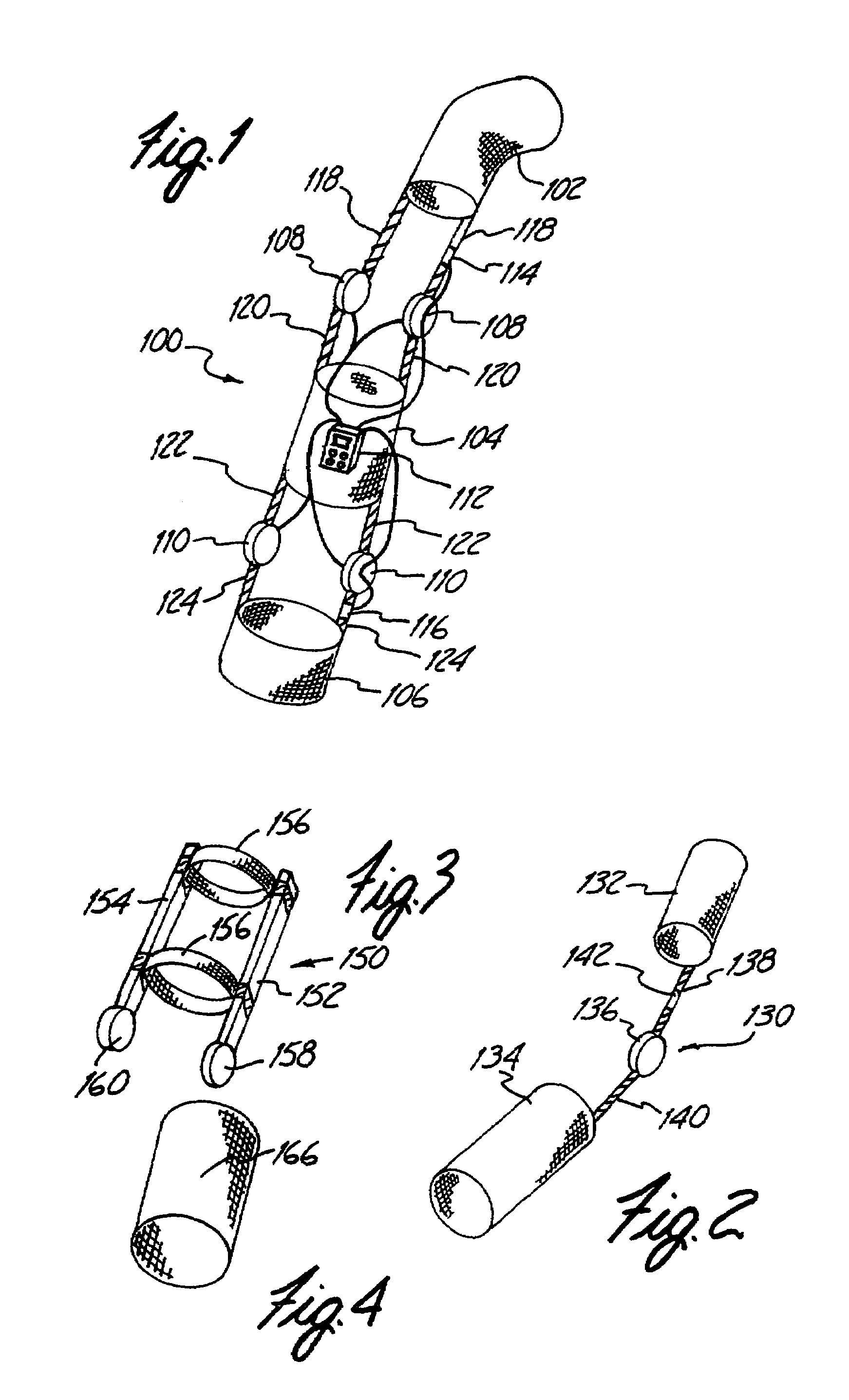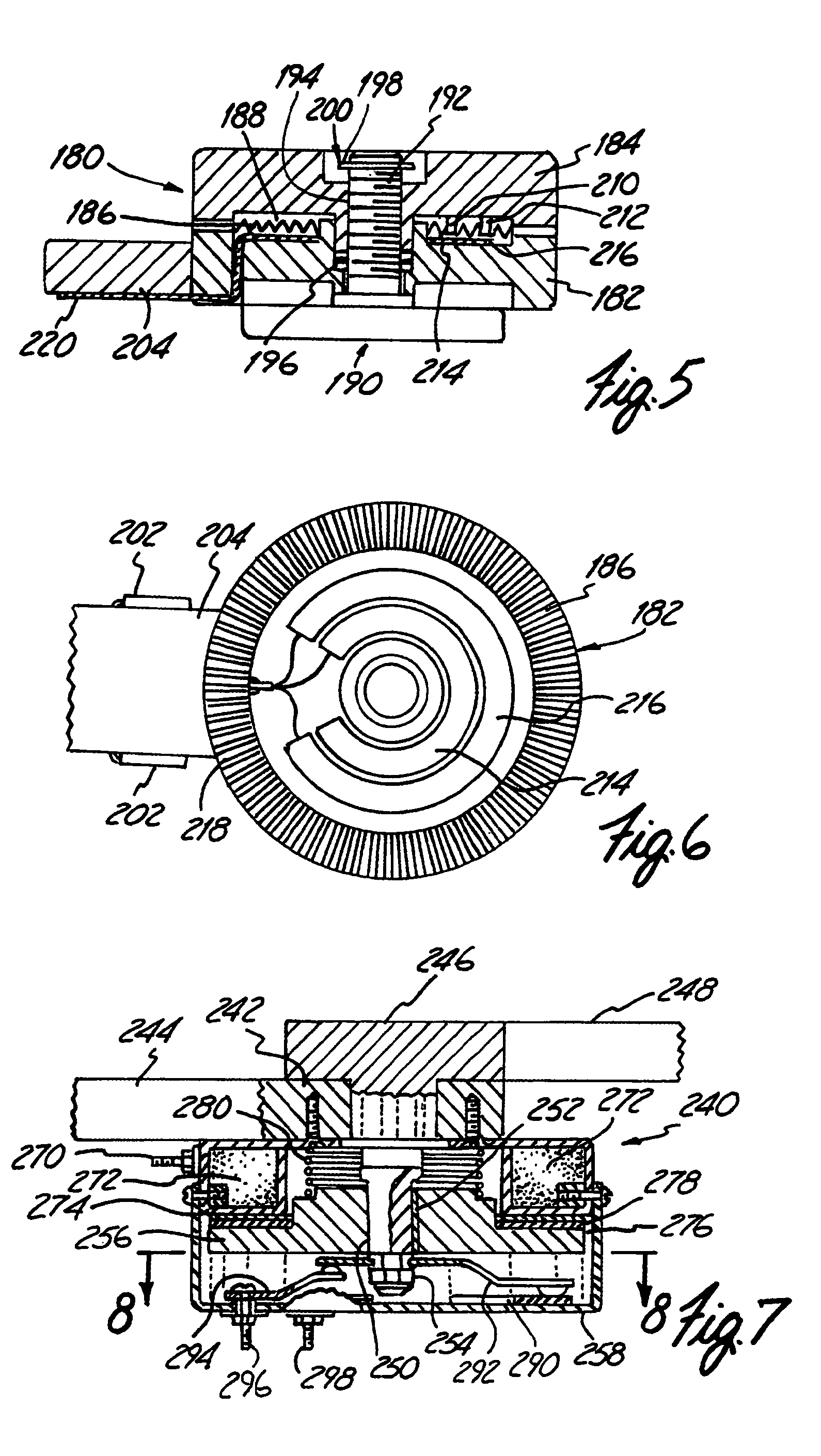Rehabilitative orthoses
a technology of orthoses and instruments, applied in the field of rehabilitation orthoses, can solve the problems of further injuring the joint, cost and motivation barriers to accessing desirable amounts of exercise,
- Summary
- Abstract
- Description
- Claims
- Application Information
AI Technical Summary
Benefits of technology
Problems solved by technology
Method used
Image
Examples
embodiment 166
[0067]Referring to FIG. 4, an alternative embodiment 166 of a support structure that surrounds the corresponding body portion. Support portion 166 generally is somewhat rigid and can be constructed from a variety of materials. Preferred materials for the construction of support portion 166 include, for example, molded plastic shells, plaster, water-activated fiberglass, heat moldable thermoplastics, heat shrink plastic, and other cast forming materials. Support portion 166 can be premolded in various sizes such that a particular size is selected “off-the-shelf” based on measurements of the patient. Alternatively, support portion 166 can be constructed to provide a custom fit for a particular patient. These custom molded support portions are molded to fit the body portions of the particular patient by a trained physician or technician.
[0068]Whether or not a linker is used to connect a particular support portion and a hinge, a hinge can involve just one or a plurality of distinct hing...
first embodiment
[0101]Orthosis 130 shown in FIG. 2 includes hinge 136 capable of rotation in multiple planes to provide for multiple ranges of motion about a single joint. a hinge capable of motion in multiple planes is shown in FIG. 13 and an exploded view in FIG. 14. Hinge 510 includes rod 512 that moves within sleeve 514. Sleeve 514 has four resilient sections 516 that form a truncated conical shape. Sleeve 514 further has threads 518. Cap 520 fits over and screws onto sleeve 514. Cap 520 includes worm gear threads 522. Lever 524 has mated worm gear threads 526 to complete the worm gear with lever 524 adjacent cap 520.
[0102]Cap 520 can be screwed to varying degrees to increase or decrease the tension at resilient sections 516. Tension at resilient sections 516 grips rod 512 to a corresponding degree. The worm gear comprising threads 522 and 526 can be used to screw cap 520 on to or off from sleeve 514. The worm gear is advanced by the rotation of lever 524.
[0103]Hinge 510 moves in two degrees of...
PUM
 Login to View More
Login to View More Abstract
Description
Claims
Application Information
 Login to View More
Login to View More - R&D
- Intellectual Property
- Life Sciences
- Materials
- Tech Scout
- Unparalleled Data Quality
- Higher Quality Content
- 60% Fewer Hallucinations
Browse by: Latest US Patents, China's latest patents, Technical Efficacy Thesaurus, Application Domain, Technology Topic, Popular Technical Reports.
© 2025 PatSnap. All rights reserved.Legal|Privacy policy|Modern Slavery Act Transparency Statement|Sitemap|About US| Contact US: help@patsnap.com



